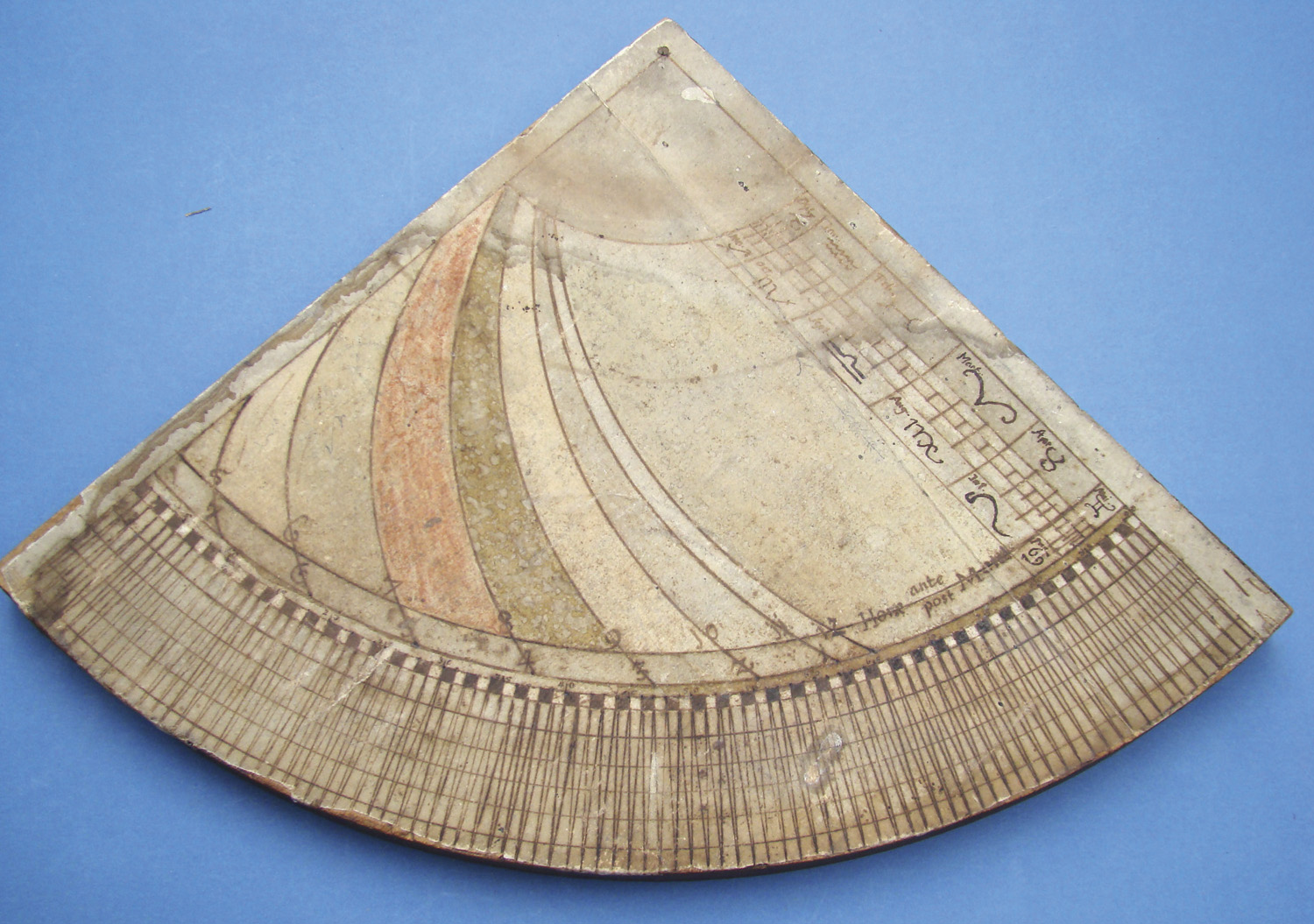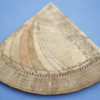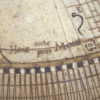MANUSCRIPT HORARY QUADRANT
Stock Number: 10051
$4800.
For sale, an antique probably German manuscript quadrant from the 17th century. It is thick wood, mounted on one side with paper laid out and partially hand colored.as degree quadrant.
Dimensions
8-3/8 (21 cm) radius
Circa
c. 17th century
Country of manufacture
Germany
Description
MANUSCRIPT HORARY QUADRANT, probably German, c. 17th century. This thick (3/4″; 1.9 cm) wood quadrant is 8-3/8″ (21 cm) in radius, mounted on one side with a paper sheet laid out in ink with partial hand coloring. The other side has an incomplete attempt to draw the same inked design directly on the wood. A plugged hole at the apex would anchor a string with plumb bob. Two edge holes might permit auxiliary sights, although one can of course sight directly along the broad edge.
The layout presents a degree quadrant, the scale running counter-clockwise from 0° to 90°, highlighted every degree with alternating dark and light squares, numbered every five degrees, and with a broad band of transversal lines giving interpolation points every ten arcminutes. Within this is a large band of curved hour lines running from 4 am to 12 noon and back again to 8 pm, the number sequences labeled in Latin respectively “ante” and “post-Meridie.” Along the right edge is a Zodiacal / calendrical scale divided every five days. Condition is good noting water damage especially around the apex and along one edge.
This is a form of the early horary quadrant, known from Medieval times (see, e.g., Cowham, 2014, p. 12; Tesseract Catalogue 78, Item 14). It is laid out for a latitude of approximately 46°. To find the time with this altitude dial, one simply positions a bead along a plumb line such that the bead sits at the correct date / Zodiacal position on the scale, then aligns the quadrant edge with the sun, meanwhile letting the plumb line hang freely and noting the correct time under the bead.
We suggest a central European, probably German, origin of the quadrant based on the numeral shapes (“1″ as”j,” “2” as “z”), the spelling “Mai,” and the latitude consistent with regions just south of southern Germany
Similar manuscript instruments are quite uncommon, although some fine ones have survived, noting the 15th century planetary instruments in Frankfurt am Main (see Glaseman), and the lunar computer in Tesseract Catalogue 98 (item 4).
Ask the Dealer
Dealer information
 TESSERACT
TESSERACT
David and Yola Coffeen both have enjoyed academic careers, as planetary astronomer and as linguist/educator. But since 1982 (yes, 1982!) they have been full-time dealers in early scientific and medical instruments, under the name Tesseract. Selling primarily by catalogue (over 100 issued so far) they also have a web presence at www.etesseract.com, and can be contacted at [email protected].








